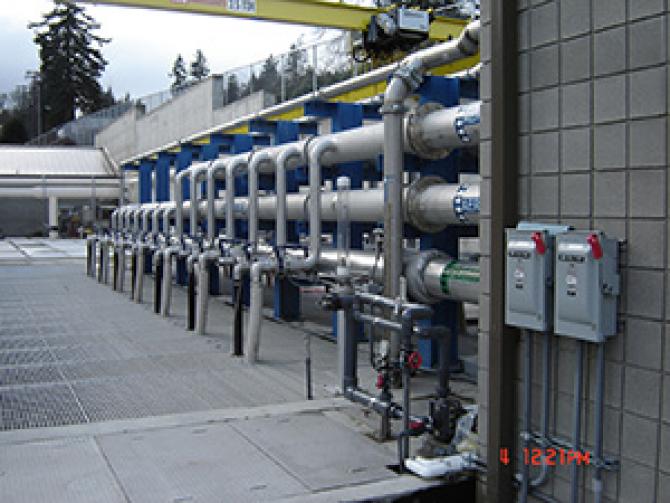Membrane Filtration
A regulated flow is introduced to the Membrane Filtration process. The process has two tanks in which microorganisms and bacteria consume organic material (food) in the water. One tank is anoxic (contains little dissolved oxygen) and an aerobic tank (contains dissolved oxygen). Membranes are contained in the aerobic tank. Filtration is achieved by drawing water to the inside of the membrane fiber under low vacuum pressure. The hollow-fiber membranes have nominal and absolute pore sizes of 0.02 and 0.1 microns respectively. The small pore size excludes particulate matter including solids, bacteria, pathogens and certain viruses. The excess process sludge is pumped to the Solids Handling process to be thickened and sent for further processing in the anaerobic digesters. The treated water (permeate) is conveyed to the main permeate collection pipes, and then is blended with the effluent from the Secondary Clarifiers in the disinfection channel. This highly treated water is also used for the purposes of water reclamation which is distributed for landscape irrigation uses.


